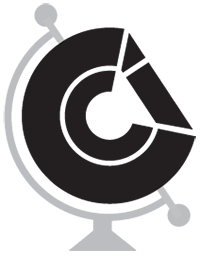The Rising Popularity of Rainscreen Facades: An Interview with Q-VENT
The popularity of rainscreen façade systems is soaring, significantly shaping the modern skyline of cities across the United States. Architects, builders, and property owners are increasingly recognizing the remarkable benefits of rainscreen facades, which include enhanced building durability, energy efficiency, and cost-effectiveness. With a diverse range of surface materials available for cladding, architects and designers have opportunities to create visually stunning and structurally sound facades. This flexibility in design, combined with the evident advantages in terms of protection and performance, has contributed to the widespread adoption of rainscreen facades.
In this blog post, we are excited to present our trusted partner Q-VENT, a company that designs, engineers, and manufactures rainscreen systems. With extensive experience in completing impressive facades in New York City, Q-VENT has provided engineering services and manufactured substructure components for numerous projects. We interviewed Plamen Dimitrov, the Founder and CEO of Q-VENT, and Tatyana (Tanya) Ivanova, the Head of Design and Engineering, to gain insights into the world of rainscreen systems.
Architectural Rainscreen Systems: A Perfect Blend of Practicality and Aesthetics
Architectural rainscreen systems offer a practical solution for protecting buildings from direct rain while providing creative freedom for architects. Tanya explains, "The rainscreen system consists of cladding panels that are attached to the building's exterior wall using a metal substructure in most cases. The system is intended to provide protection from direct rain. The air cavity created behind the panels allows for drainage and/or evaporation of any water that may pass by the cladding."
Plamen adds a touch of humor, saying, "It's a tool that gives flexibility and choice when it comes to facade design. It removes barriers in front of architectural imagination. And it's something that remains unaffected by ChatGPT… yet."
Designing Rainscreen Systems: Overcoming Challenges and Embracing Innovation
Designing rainscreen systems presents its own set of challenges, with time being a critical factor. Plamen emphasizes, "The time we need to outgrow previous or standard solutions and create a better one. The main challenge is when you get into a routine because at some point, it hinders the capacity to break free from the familiar and create something truly impressive."
Tanya further explains, "Time is never a sufficient resource. It becomes even more challenging when you've made a decision to never compromise the quality of your work. Sometimes we have to decline projects because we want to focus on the challenging ones that will bring new knowledge and progress to the team. These decisions are also very difficult in the context of a business organization."
Unleashing Architectural Creativity: The Freedom of Rainscreen Systems
Rainscreen systems offer architects unparalleled creative freedom. Tanya highlights the possibilities, stating, "Diverse materials combined in various forms and shapes. The rainscreen engineers are here to bring life to the bravest architectural projects."
Plamen shares, "Mainly through the use of new cladding materials. The possibilities for innovative forms and sizes of the facade panels give architects the chance to create unique facades. In recent years, the development in prefabrication technologies and innovation in materials has brought new products to the market. Now, it is up to the creativity of architects to utilize these products for aesthetically remarkable projects."
Sustainability and Energy Efficiency: Rainscreen Systems at the Forefront
With the increasing focus on sustainability in construction, rainscreen systems play a pivotal role in achieving overall energy efficiency. Tanya believes that rainscreen systems are the future of facades in terms of sustainability, stating, "I believe that in many ways, this is the future of facades, but it is still an ongoing process of constant development towards sustainability. Rainscreen systems have the potential to contribute significantly to energy efficiency in buildings.
Plamen adds, "Our role in this process is to come up with new solutions. For instance, we are now launching a new wall bracket made of stainless steel to improve thermal break. By continuously innovating and finding ways to enhance the performance of rainscreen systems, we contribute to the overall energy efficiency of buildings."
Q-VENT's Commitment to Quality and Collaboration
When it comes to differentiating quality, Q-VENT stands out due to its dedication and commitment to each project. Plamen emphasizes, "It is our dedication to every project we take. If you ask our clients, they will say that the best thing about Q-VENT is the service we provide. We don't drop the ball. Every project is a challenge, and while there may be mistakes along the way, we are always there to work on a solution, regardless of 'whose fault' it was or where the mistake happened. We are committed to the project until the building is done."
Tanya adds, "This is just our way of doing things. I don't think we ever intentionally made a business decision to operate like this; it's just who we are as people. Moreover, we believe that sharing knowledge is crucial for progress in the industry. By sharing knowledge, we can all advance faster and come up with better solutions every time."
The Advantages of Integrated Design and Manufacturing
Having a single company responsible for both designing and manufacturing rainscreen systems offers numerous advantages. Plamen explains, "When you draw the line, it becomes evident that our clients have saved money, time, and, most importantly, unnecessary stress."
Tanya adds, "Things are much easier to coordinate. From an internal perspective, for us as engineers, being matched with the production team creates a huge benefit when it comes to designing new things. The seamless integration of design and manufacturing allows for efficient communication and ensures that the vision for the rainscreen system is realized accurately."
Customization: Tailoring Solutions for Success
The ability to customize rainscreen attachment systems plays a crucial role in the overall success of a building project. Plamen emphasizes, "This is the real difference between providers of engineering services in the market. Bespoke solutions are the premier league, and most outstanding facades require them."
Q-VENT, a trusted partner in the world of rainscreen systems, exemplifies the advantages of this innovative building solution. With a commitment to quality, collaboration, and customization, Q-VENT, along with Cladding Concepts, helps architects and builders create stunning and sustainable facades. As the popularity of rainscreen facades continues to rise, companies like Q-VENT play a vital role in shaping the modern skyline of cities across the United States.
Learn more about Rainscreen Cladding solutions and how we can bring your vision to life.





